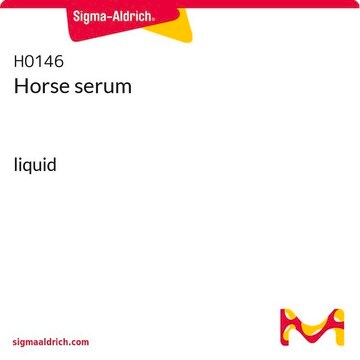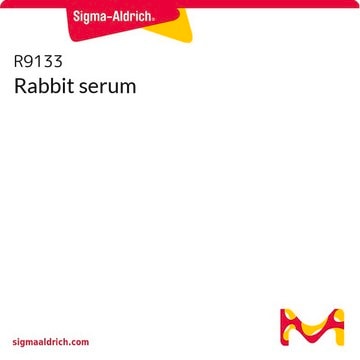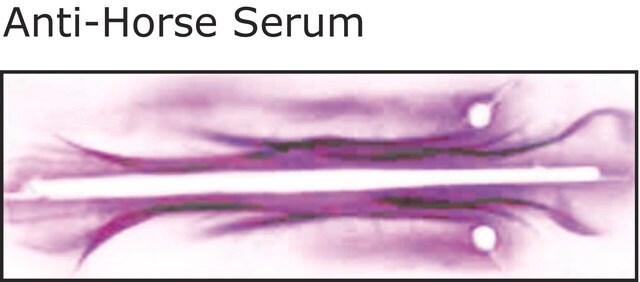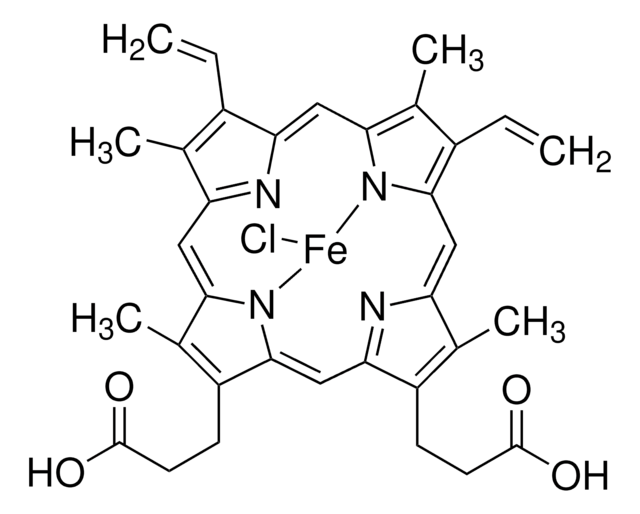B9433
Bovine Serum, Adult
USA origin, sterile-filtered, suitable for cell culture
Synonym(s):
Bovine sera, cow sera, cow serum
Sign Into View Organizational & Contract Pricing
All Photos(1)
About This Item
UNSPSC Code:
12352207
eCl@ss:
32160409
NACRES:
NA.71
biological source:
bovine
origin:
USA origin
sterility:
sterile-filtered
form:
liquid
shipped in:
dry ice
Recommended Products
biological source
bovine
Quality Level
sterility
sterile-filtered
form
liquid
composition
hemoglobin, ≤50 mg/dL
origin
USA origin
technique(s)
cell culture | mammalian: suitable
impurities
≤50 EU/mL endotoxin
shipped in
dry ice
storage temp.
−20°C
General description
Bovine serum (BS) is considered a cost-effective choice than fetal bovine serum (FBS). It can also be preserved stable for a long time.
Application
Bovine Serum, Adult has been used:
- to treat silicone square to prepare it for the biofilm assay for in vitro biofilm growth conditions
- in cell culture as a component in Dulbecco′s modified Eagle medium for digesting articular cartilage and proximal metacarpals
- as a lubricating solution in hydrodynamic analysis and to imitate the synovial joints
Biochem/physiol Actions
Adult bovine serum (BS) possesses bactericidal activity against Helicobacter pylori. Heat-treated BS can be used as the best serum source of H. pylori culture medium.
Storage Class Code
10 - Combustible liquids
WGK
WGK 3
Flash Point(F)
Not applicable
Flash Point(C)
Not applicable
Personal Protective Equipment
dust mask type N95 (US), Eyeshields, Gloves
Choose from one of the most recent versions:
Already Own This Product?
Find documentation for the products that you have recently purchased in the Document Library.
R Pakkanen
In vitro cellular & developmental biology. Animal, 30A(5), 295-299 (1994-05-01)
A mixture containing an ultrafiltrate fraction (UF) of bovine colostrum (6.7%), adult bovine serum (BS) (1%), and human holo-transferrin (hTF) (5 mg/liter) was developed for cultivation of Chinese hamster ovary cells (CHO-K1) and African green monkey kidney cells (Vero). The
Steven H Elder et al.
Journal of orthopaedic research : official publication of the Orthopaedic Research Society, 24(4), 740-747 (2006-03-04)
Cells are often cultured at high density (e.g., confluent monolayer and as pellets) to promote chondrogenic differentiation and to maintain the chondrocyte phenotype. They are also frequently suspended in hydrogels such as agarose or alginate for the same purposes. These
Study on surface texture patterns for improving tribological performance of bioimplants
Shen G, et al.
Surface and Coatings Technology (2021)
Priya Uppuluri et al.
Mycopathologia, 168(3), 101-109 (2009-04-17)
Candida albicans biofilms on most medical devices are exposed to a flow of body fluids that provide water and nutrients to the fungal cells. While C. albicans biofilms grown in vitro under static conditions have been exhaustively studied, the same
Marianne K Poxleitner et al.
Eukaryotic cell, 7(4), 569-574 (2008-02-26)
Giardia intestinalis is a ubiquitous intestinal protozoan parasite and has been proposed to represent the earliest diverging lineage of extant eukaryotes. Despite the importance of Giardia as a model organism, research on Giardia has been hampered by an inability to
Articles
Find answers to frequently asked questions (FAQs) about FBS and other serum products, and links to related products.
Our team of scientists has experience in all areas of research including Life Science, Material Science, Chemical Synthesis, Chromatography, Analytical and many others.
Contact Technical Service






